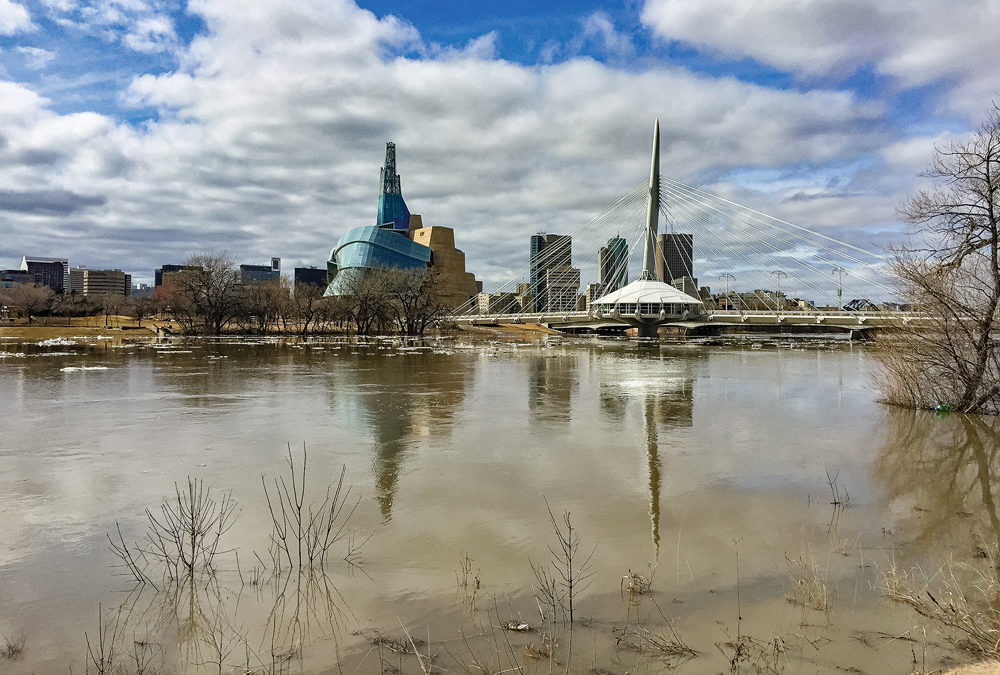Farmers downstream maintain that province’s “blame it on the rain” position doesn’t hold water
This year’s flooding of cropland along the Assiniboine River downstream from the Shellmouth Dam couldn’t have been prevented, according to the province.
“The Assiniboine Valley producers are farming vulnerable, low-lying Assiniboine Valley lands. In the 2011 and 2012 flood years, the inundation of crops was a natural occurrence,” according to a new report by the Department of Manitoba Infrastructure and Transportation.
Department officials created a “what if” model which showed that even if the Shellmouth Reservoir had been lowered to 1,386 feet above sea level — leaving it virtually empty — it would have only reduced run-off from 7,630 cubic feet per second to 6,810 cfs.
Read Also

Mazergroup’s Bob Mazer dies
Mazergroup’s Bob Mazer, who helped grow his family’s company into a string of farm equipment dealerships and the main dealer for New Holland machinery in Saskatchewan and Manitoba, died July 6 from cancer.
“This scenario represents significant flooding for a long duration of Assiniboine Valley producers’ lands with a minor reduction of water levels at all points along the Assiniboine River,” the document stated.
The province has been blamed for the flooding because it kept reservoir levels too high (1,402 above sea level) this spring.
Cliff Trinder, who farms at Millwood and also sits on the Shellmouth Reservoir Operations Liaison Committee, said he wants to see an independent review of the report — which the province has promised to obtain — before commenting on it.
But the report doesn’t absolve the province for failing to find a solution to the situation, he said. For example, the province was urged in 2008 to buy out lands immediately downstream from Shellmouth to gain greater flexibility in dam operations. Had the narrow stretch of the river from Shellmouth to St. Lazare, which has a capacity of 1,500 cfs, been available to officials as a controlled flood plain, much of the farmland further downstream to Brandon could have been spared, he said.
“If they had done that, they could have prevented it,” said Trinder.
However, the province says that option was considered but not deemed feasible.
But Trinder says the way compensation is handled is hindering the effort to find a sensible solution. The Shellmouth Dam Act provides compensation only in cases of “man-made” flooding — but that’s defined as outflows exceeding inflows. (The province says that wasn’t the case this year and “the reservoir did provide flood damage reduction benefits to downstream lands up to July 1.”) Sacrificing 7,000 acres upstream of the dam would cost $2 million in compensation but would have prevented producers from losing an estimated $16 million in farm receipts on 40,000 flooded acres in the valley.
Shellmouth liaison committee member Keith Pearn, whose 2,000 acres of canola and other crops near Virden were still under two feet of water last week, said many valley farmers spent heavily on inputs this season after the province estimated there was only a 10 per cent chance of a flood.
Moreover, the whole situation could have been prevented if the province had moved more quickly on a 2004 plan to install floodgates on the spillway that would add six feet of additional retention capacity, he said.
“It’s been eight years now and nothing has happened. They don’t want to take any responsibility,” said Pearn.
The province said environmental studies of the gates are “still underway,” but construction is expected to start in 2015.

















